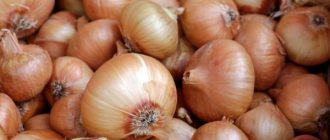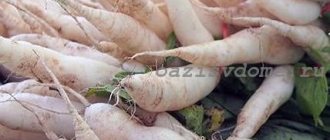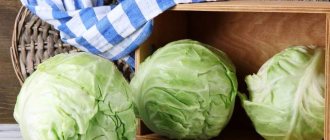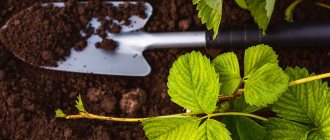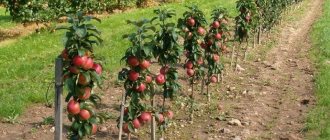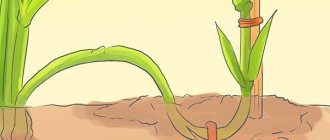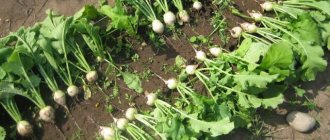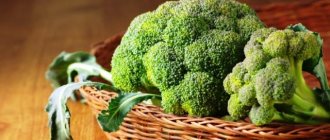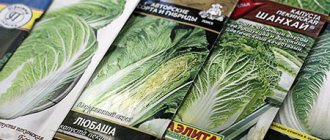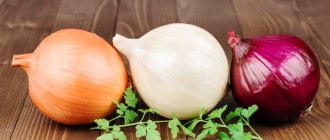Optimal timing for harvesting beets
Particular attention should be paid to the time required for the growing season of root crops.
There are 3 main categories:
- Early varieties. Full ripening requires an average of 70 days. The disadvantage of this variety is its less pronounced taste. The first fruits are harvested from August to September. An example is Boyarina.
- Mid-season. You need to wait 80-100 days from germination. The most common species in the temperate climate of our country. Suitable for consumption raw and cooked. The harvest begins in September. This includes Bordeaux.
- Late ripening. The fruits are formed in 100-140 days. They are distinguished by good keeping quality and rich taste. Usually harvested in October, so they are not suitable for growing in northern climates. Representative - Commander.
How to understand that it’s time to harvest beets
So, summer chores are behind us, it’s time to dig up ripe vegetables. But how can you tell if the beets are fully ripe?
The first thing people pay attention to is the variety and time of emergence . Based on this information, you can calculate the approximate time of ripening of root crops.
However, weather conditions make significant adjustments. After all, one summer is warm and dry, and the other is rainy and cold.
Therefore, when determining the time of harvesting, it is more logical to focus on the external signs of the fruit. They will tell you more accurately whether the root crop is ripe or not.
If in doubt, you can selectively dig up a few fruits and determine how ripe they are.
Signs indicating ripeness
You can tell that beets are ready for harvest by the following distinctive features:
- the tops (especially the leaves at the base of the fruit) began to turn yellow and wither;
- growths appeared on root crops;
- the size and weight of the fruit correspond to the promises of the seed manufacturer;
Important . If the summer was dry, there is no need to rush into harvesting. If it’s rainy, it’s better to dig up the root crops in time, as they will begin to rot due to excess moisture.
How to determine the maturity of a root crop?
There are several main parameters:
- Dimensions. Usually written on the package with seeds. Depending on the variety, the diameter of average fruits ranges from 5-10 cm. The largest representatives reach 15 cm.
- Leaves. They become yellowish and wither.
- Root. The central one is thinning. A large root system is characteristic of unripe vegetables.
- Fruit. Small growths appear on them.
Cleaning according to the lunar calendar
There is an opinion among experienced gardeners that harvesting should be based on the phases of the moon:
- Decreasing. In the constellations Gemini, Capricorn, Taurus.
- Growing. In the constellations Virgo and Capricorn.
What days to pay attention to in 2021:
- July. 23-27th.
- August. In the period from 19 to 25.
- September. 8-9, from 16 to 21, 25-26.
- October. 3-6, from 15 to 19, 22-25.
If you harvest during the waning moon in the constellation Cancer, the fruits will be watery and tasteless.
Suitable dates
According to the lunar calendar, “male” fruits are collected and planted on the appropriate dates, and the same is done with “female” plant crops. Beets and carrots are female vegetables, which means that it is correct to work with them on female days of the week: Wednesday, Friday, Saturday. Regarding the last day, the opinions of gardeners and folk sorcerers do not agree:
- summer residents consider Saturday to be an ordinary day;
- sorcerers talk about the prohibition of any manipulations in the garden except pruning and uprooting, since this day is patronized by the heavy planet Saturn.
According to the moon, vegetable crops that will be stored all winter are harvested during the waning phase. During this period, the movement of juices inside the plants slows down; they are, as it were, preserved. If you dig root vegetables while the moon is waxing, the vegetables will quickly become limp. When harvesting vegetable crops, keep a reference point to the moon; the following are noted on the calendar:
- lunar phases;
- day;
- planets;
- Zodiac signs.
The table of favorable harvest days helps you avoid making mistakes when planning work.
| Allowed dates for early and mid-ripening varieties | Moon position | Allowed dates for late-ripening varieties | Moon position |
| 03.09 | The moon is waning, 15-16 lunar days, in the sign of Pisces | 04.10 | The moon is waning in the sign of Taurus, cleaning is allowed from 12-00 to 15-00 Moscow time |
| 04.09 | The moon is waning, 16-17 lunar days, in the sign of Aries, you can collect vegetable root crops for seed material | 06-09.10 | The moon is waning, 19-23 lunar days, in the signs of Taurus, Gemini and Cancer |
| 08-10.09 | Waning, 20-23 lunar days, in the signs of Taurus and Gemini, the most suitable dates | 13-15.10 | Waning, 25-28 lunar days, in the signs of Virgo and Libra |
| 27-28.09 | Grows in Aquarius, but you can dig carrots | 13-15.10 | Waning, 25-28 lunar days, in the signs of Virgo and Libra |
| 30.09 | Grows in Pisces, but beets are allowed to be dug | 13-15.10 | Waning, 25-28 lunar days, in the signs of Virgo and Libra |
Based on the recommendations of the lunar calendar table for the Moscow region, suitable dates for harvesting root crops have been determined. They take into account the waning of the Earth's satellite and zodiac signs. The principle of dividing into “male” and “female” dates is not taken into account here, since it is not justified from an agronomic and astrological point of view.
On a note!
The lunar calendar provides recommendations, not specific guidelines. If it rains or a hurricane rages on the permitted day, then it is rational to postpone harvesting root crops until the weather conditions return to normal.
If you follow the recommendations of the moon, then the harvested crop can be stored all winter, of course, following the rules for vegetable crops. Immediately after the carrots and beets are dug up, they should be shaken off the soil and left to lie for 6 hours in a dry room on a nylon cloth or in plastic ventilated containers.
The influence of weather conditions on the timing of beet harvest
The growing season of root crops is greatly influenced by climate:
- Dry and cool. If the culture matures under such conditions, then there is no need to rush. It can remain in the soil for several days after ripening to accumulate nutrients and become sweeter.
- Rains. With excessive moisture, beets become watery, quickly spoil and suffer from diseases. In this case, the fruits must be collected immediately after ripening.
- Warm. If the temperature is too high, the roots will grow tough and fibrous in texture.
The crop must be harvested before the first frost, otherwise it will quickly deteriorate.
Determining the ripeness of vegetables
Carrots and beets are excellent neighbors in the garden, and they ripen at approximately the same time. Both vegetables have early and late varieties; varieties that ripen at approximately the same time should be planted nearby.
On a note! Early carrots ripen in 80-90 days, mid-ripening ones require about 100 days, and late ones - 120-130. Beets take a little longer. Early-ripening varieties are ready for harvesting after 100 days, medium - 115-120, and late - 140. Therefore, it is best to sow early types of beetroot with mid-ripening carrots.
The first signal that the carrots are ripe is the yellowing of the tops. The lower branches should already be dry. Do not wait until all the tops are dry, as the vegetables will be tough and tasteless.
The readiness of carrots for harvesting can be determined by digging up several root vegetables. They should be hard to the touch, and the area where the tops meet and the underground part should turn orange or brown.
Beets are left in the beds longer if necessary. The vegetable easily tolerates the first frosts and does not suffer from gray rot. The maturity of root crops can be determined by the tops. If you break off the largest leaf and juice flows out of it, you should leave the beets in the garden to ripen.
Harvesting rules
The steps are as follows:
- Choose a dry and sunny day. If you pick wet fruits, they will last less.
- Take a sharp knife or shovel. Dig up the vegetable from several sides. Avoid scratching the skin.
- Carefully grab the tops and pull up. Try not to damage the root vegetable.
- Clear away the soil. It is better to do this with your hands wearing fabric gloves.
- Trim the leaves. Leave about 1 cm. Also remove the side roots and shorten the central one if it is too long.
- Place the beets outside under a shelter to dry. Turn over to dry evenly on all sides. You shouldn't spend more than 4 hours on this. If you leave the fruits in the open air, they will quickly lose their juiciness. Indoors, root vegetables can be dried longer - 2-3 days or even 1 week.
It is not recommended to wash beets, otherwise they will quickly become unsuitable for storage.
In the following video you can learn when to properly harvest beets and how to do it:
When to dig up beets for storage
When determining the timing of digging beets, it is necessary to take into account the characteristics of the variety. The optimal period for digging up fodder beets is the end of October. When growing late varieties, harvesting is carried out in mid-November. However, it must be remembered that the first frosts can harm the crop and make the root crop watery.
Red beets: when to harvest
Unlike the forage type of crop, red beets ripen faster. The most suitable period for harvesting vegetables is mid-September and early October.
However, the following factors may influence the timing of harvest:
- the region in which the vegetable is grown;
- characteristics of the variety;
- weather;
- appearance of the culture.
Harvesting must be done in several stages. Large root crops are dug up first, small ones are collected last.
The ripening time of beets may vary depending on the growing region. The following features stand out:
- for the Moscow region - for this region, harvesting can be carried out from the end of August until the first days of October. The harvested crop can be stored well, without reducing its taste;
- Middle zone - it is recommended to harvest as the vegetables ripen. However, beets must be harvested before the first frost;
- Ural - to obtain a large harvest in this region, it is necessary to give preference to early varieties. Therefore, the harvest must be harvested at the end of August;
- Siberia – beet harvesting is carried out until September 10.
For countries such as Ukraine and Belarus, beet harvesting is carried out from mid-September until the first frost.
Sorting
There are 2 sorting criteria:
- Size. Sort through the vegetables, separating small and large ones. When storing, small beets are placed on the bottom, and large ones are placed on top.
- Deadlines. Store early, mid-season and late root vegetables separately.
You also need to remove:
- damaged;
- with signs of illness;
- rotting;
- deformed.
If spoiled areas are cut off from vegetables, they can be used for immediate consumption or fed to livestock.
Storage Features
After harvesting, it is important to ensure that it retains its characteristics longer. The tips below will help you do this.
Optimal conditions
How to create:
- Temperature. Should be between 0-3 degrees.
- Humidity. Maintained at 90-92%.
- Room. Dark, protected from rodents and frost.
Methods
There are several methods that allow you to preserve beets for the winter. You will learn more about each of them below.
Basement or cellar
Main methods:
- Box Place the vegetables in cardboard boxes and sprinkle sand on top.
- Shelves. Place the beets in 1 layer, maintaining a distance between the vegetables. The bottom board should be about 15 cm from the floor to ensure normal air circulation. Do not lean the rack against the wall.
Apartment
Where to store:
- Balcony. Only a glazed loggia will do. Take large polyethylene bags, make holes in them and place the beets, sprinkling sawdust on top. Don't tie it up. You can also pack them in boxes with air holes and fill them with shavings. During frosty periods, the crops are covered with blankets.
- Pantry. Place in wooden boxes, sprinkling with sand so that the root vegetables do not touch each other.
Fridge
The shelf life on the shelf does not exceed 1 month.
How it happens:
- In the package. Root vegetables are placed in a bag opened for air circulation and placed in a vegetable drawer.
- On paper. Each fruit is wrapped separately.
You can also place the vegetables in the freezer. For this:
- cut off the tails;
- Boil until done;
- wait for it to cool down;
- remove the skin;
- cut in a convenient way;
- place in bags or containers, labeling each with the date;
- put it in the freezer.
Root vegetables retain their quality for 8 months or more.
Useful tips
In the process of growing and determining the timing of harvesting carrots and beets, you need to pay attention to tips and recommendations for making work easier and storing the crop for a long time. Here are some of them:
- keep a field diary indicating the ripening period of the variety, place, planting date;
- store beets on top of potatoes, because they release excess moisture;
- store vegetables in a container with a mixture of sand and ash in a 1:1 ratio;
- use sand in a damp room, polyethylene in a dry room;
- cut the tops with scissors at a distance of 1.5-2 cm from the root crop;
- Before packing, carefully study the weather forecast for the near future.
All the rules for harvesting carrots and beets allow you to get a high-quality harvest. The process is not complicated, but serious. It is necessary to take into account the influence of the Moon on harvesting time, the climate of the Moscow region, and properly prepare vegetables for storage. This way you can save the grown crop until the next planting. Correct determination of ripeness by the external characteristics of the fruit will allow you not to overcook and harvest the crop ahead of schedule.
Secrets of experienced gardeners
How else can you preserve the properties of vegetables:
- Shared storage. To do this, place the potatoes as the bottom layer. Place the beets on top. With this method, both cultures remain fresh and retain their beneficial properties.
- Soaking in clay. Mix fatty clay with water to obtain a substance similar in structure to sour cream. Dip each vegetable into the mixture. Give them time to dry. In winter, you can simply rinse the fruits under water to remove excess clay.
- Salt treatment. Prepare a concentrated solution and dip the root vegetables in it. You can also sprinkle between the fruits.
- Methods for separating fruits. Other options for separating vegetables from each other are wrapping them in foil or ferns, or rolling them in wood ash.
An experienced gardener will tell you about the rules for storing beets in the following video:
Beet harvest should be done no later than November. The fruits are cleared of soil, dried and sorted, and then placed for storage in the basement, on the balcony or in the refrigerator. Under good conditions, vegetables can retain their taste and beneficial properties until next year.
0
0
Copy link
Types of beets
Beetroot (not beetroot!) is a herbaceous biennial plant belonging to the Amaranthaceae family (formerly beets belonged to the Chenopodiaceae family). There are also annual and perennial representatives of this family. Of the 13 species included in the beet genus, only two are cultivated - common beet and leaf beet.
Leaf beets (chard) are either annual or biennial. It does not form root crops; it has a taproot or fibrous, highly branched root. All the strength of the plant goes into forming a powerful rosette of succulent leaves on thick, strong petioles.
Ordinary beets are a biennial plant. In the first year, it forms a large, fleshy root crop, and in the second year, a flower stem on which the seeds set and ripen. However, common beets, as a rule, are grown as an annual crop for the harvest of tasty and healthy root crops. To obtain seeds, only small special uterine areas are left.
Ordinary beets are divided into three subgroups:
- dining room;
- sugar;
- stern
Red beets are usually divided into three varieties:
- Vindifolia is a group of varieties with green leaves and petioles. The petioles may be slightly pink. Root crops have an elongated conical shape, with powerful roots.
- Rubrifolia - this group of varieties has a dark red color of leaves and roots from the very germination. The fruits are quite varied in shape: elongated-conical, round, flat. The varieties do not tolerate heat well and do not have the highest productivity.
- Atrorubra - this group includes the most common varieties of table beets. It is characterized by dark-colored root crops, bright green leaves on red or pink petioles, and high productivity. The leaves have pronounced red veins.
